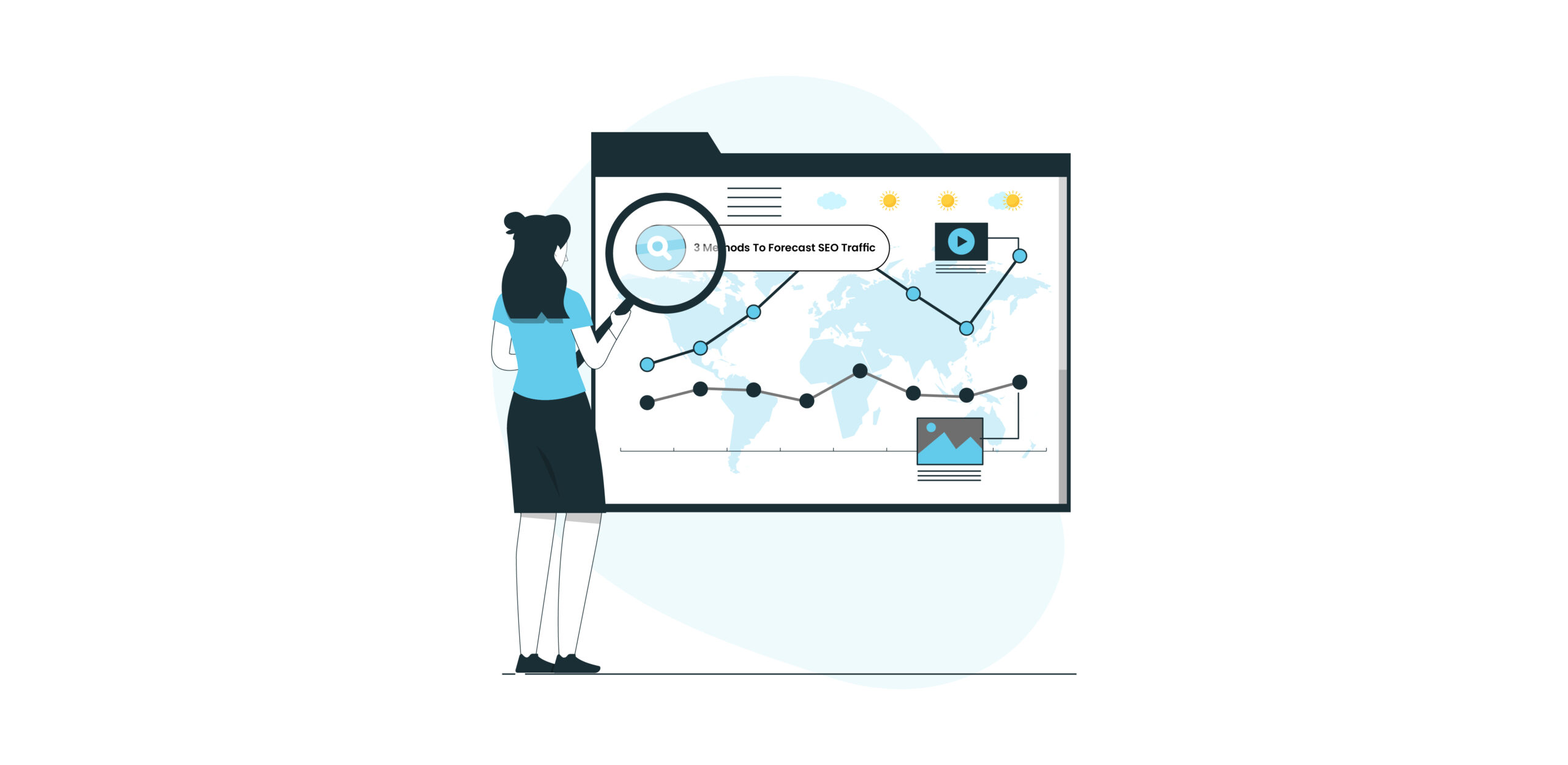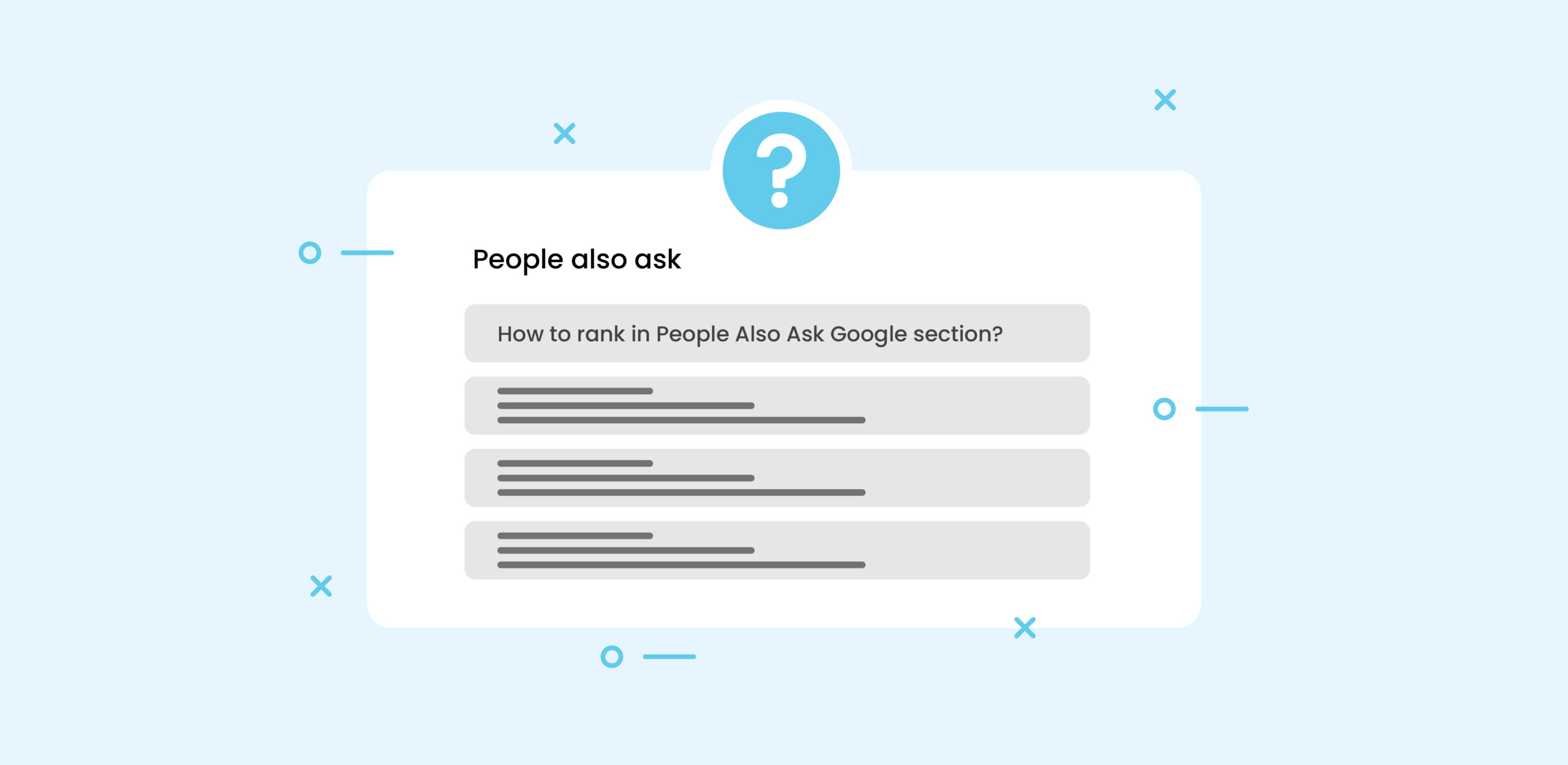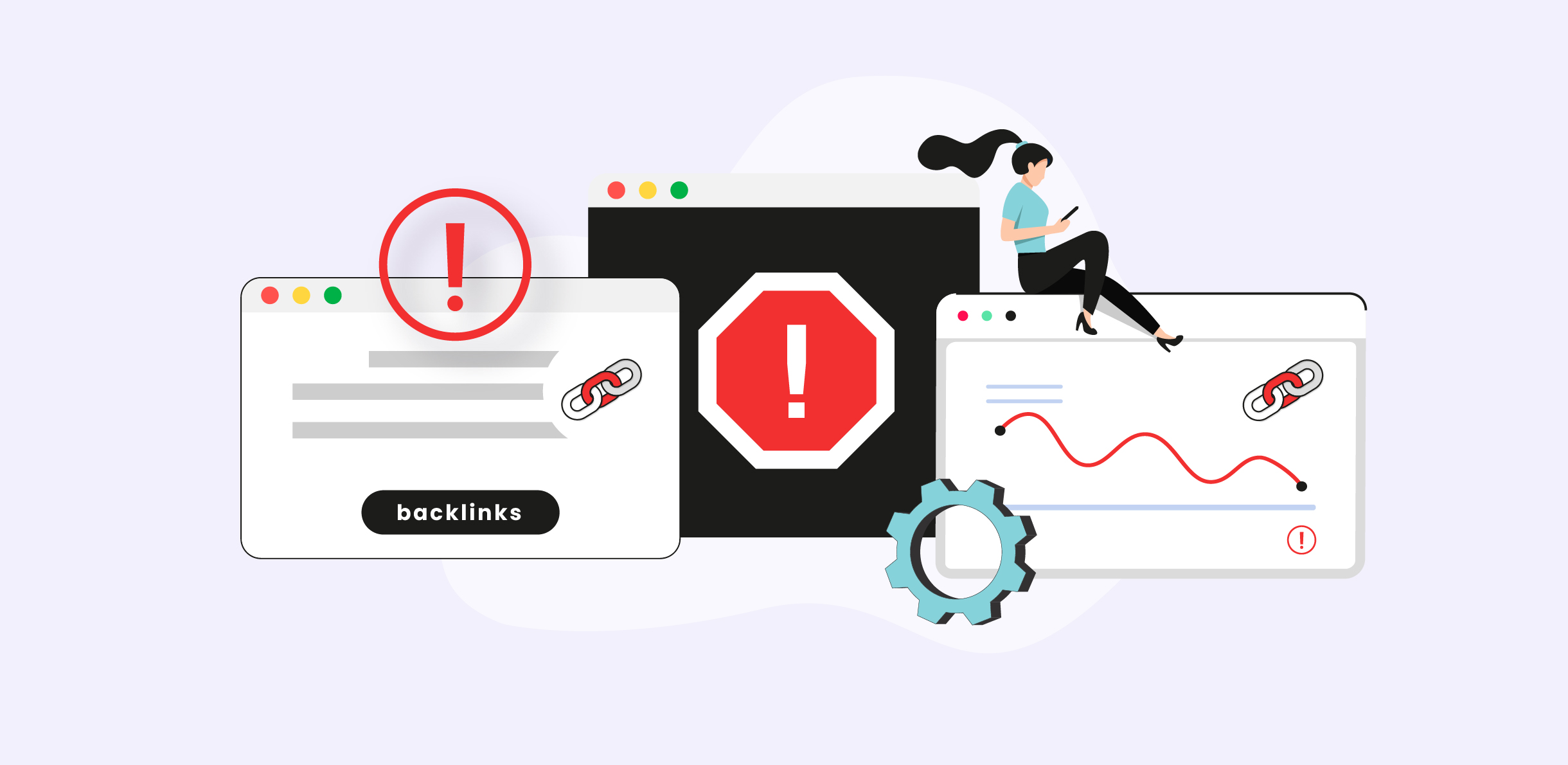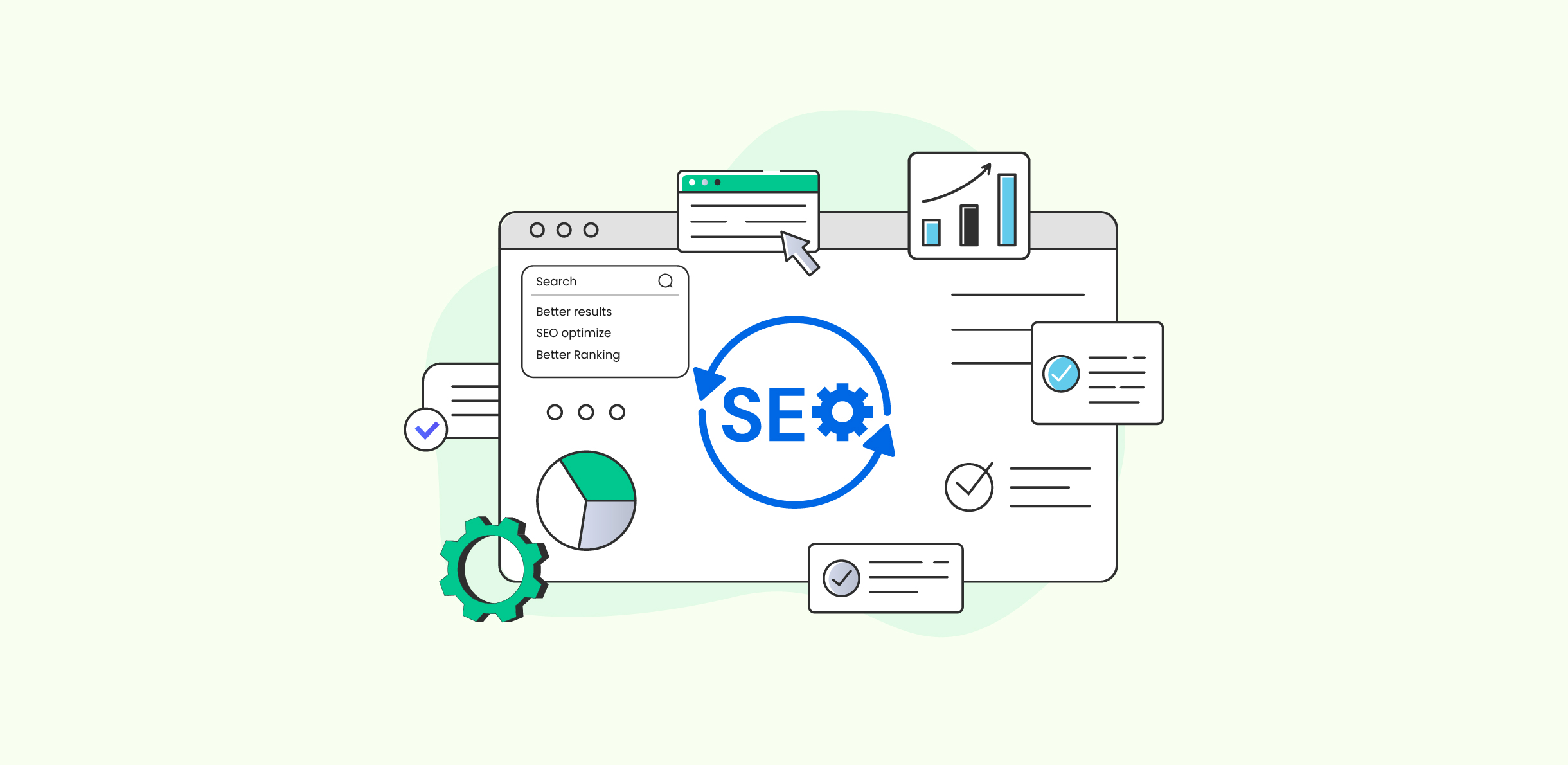Forecasting SEO traffic is like glancing through the future-focused lens to predict your search engine performance. It’s challenging and contingent on a wide variety of factors and data, but essential to help determine business revenue and reassure clients who are looking for tangible results.
When forecasting SEO, we make predictions about a number of things:
- Future rankings based on current trends.
- Amount of search traffic driven by selected digital channels.
- Click-through rates estimated using the site’s overall organic conversion rates.
Let’s dive right into this to understand how to begin forecasting trends with the help of previous data and uncover methods to forecast SEO traffic and CTR predictions.
Data Collection for SEO Forecasting
Your future ranking patterns can’t be revealed by analyzing just the backlink profile. There has to be a way to collect data on multiple ranking factors like conversion rates, CTR, and organic traffic to get a complete picture.
Where do you collect this data from? You can use first-party or third-party resources.
First Party Data
First-party data is available on Google’s OG tools, like Google Search Console and Google Analytics. These help analyze trends and patterns of organic positions, conversion rates, click-through rates, and the number of orders.
Combine this data with insights from your CRM and third-party tools to evaluate all the essential factors required to put together a credible SEO traffic forecasting report.
Third Party Data
Aside from your own website metrics, a significant part of performance forecasting involves examining your competitors. Watching their metrics closely is essential for predicting your own, as it provides an idea of the current traffic and leads generated for a particular content topic. Based on this data, you can forecast your own progress and even plan content demonstrating a higher chance of driving traffic.
Third-party tools like Ahrefs, Semrush, and Moz are a great source for extracting competitor information. You may also try the LBHQ domain checker tool to evaluate important domain metrics of your competitors.
To build a reliable forecast based on competitor data, analyze ranking factors like backlinks, traffic channels, organic keywords, and search volume. Utilizing third-party data effectively can lead to improved SEO forecasting capabilities.
What is the Significance Of SEO Forecasting?
As search engines go through a major shift and new features come afloat on the SERP, predicting SEO success becomes highly challenging. This means that it’s difficult to set targets and pre-plan outcomes.
Predicting the outcome of SEO campaigns before execution can be extremely valuable, especially when there are clients involved. Agencies that provide a breakdown of the campaign outcome in advance deliver a higher satisfaction rate.
Outgrow Your Competition
A great way to showcase your expertise in SEO, aside from providing historical data as a measure of your revenue potential, is to forecast SEO campaign outcomes in advance. By predicting future performance and showing measurable results, agencies can gain a significant edge.
It’s a great way to attract businesses who are not yet sure if they even need SEO. Providing data-backed insights on how a business can thrive under your umbrella can be a major reassurance for potential clients. This way, marketing agencies won’t just reap revenue, but also stay one step ahead of their adversaries.
Manage Resources Efficiently
Historical trends and data can be a great asset when deciding where to allocate resources in a corporate setup. For example, a marketing agency with a departmental hierarchy may have departments like:
- Social Media
- Paid Marketing
- Content & SEO
Let’s suppose each of these departments requires a new employee to help them manage extra tasks, but the company only has the budget to recruit one position. Which department gets the priority?
The one who has delivered the most results and driven the most traffic and leads. Forecasting SEO outcomes can be used here to predict how much traffic can be generated from an allocated channel in the future. This drives the company’s decision about where to invest. Take this example. The SEO team alone has reported a significant increase in organic traffic over the last six months.
Using data that translates to future revenue is one way to make resource allocation decisions. Most companies assign priority to high-potential departments based on their historical data, using it as a guideline for future growth.
Positive Customer Feedback
Happy customers are the life of any business. A word of satisfaction from a business in the same industry can draw in more clients and improve a company’s overall satisfaction rate than anything else.
One thing that clients love is pre-determining their revenue for the next month to see if it matches their targeted goals. In this case, forecasting SEO traffic provides them with a clear and transparent picture of the click-through rate, conversion rate, and overall sales.
It also provides them with an outline of the success rate of the strategy an agency plans to employ. As an agency, accurately forecasting these results and delivering accordingly is surely going to lead to some really good customer feedback.
Assigning Tasks & Planning
Staying in touch with your future strategy using predictive SEO and latest forecasting techniques are among the most prominent tactics in SEO today. It helps drive more visitors to your website and identify content with high potential for traffic. By predicting the trending terms that are likely to gain popularity in the future, you can create content on topics with a high traffic potential.
Aside from that, forecasting SEO outcomes can also help with other assignments and planning tasks:
- Determining the number of content pieces per month.
- Exploring which content format works best for target searches.
- Predicting what kind of content has a better chance of getting cited.
All this is possible using SEO forecasting tools that provide competitor insights to shape existing patterns that are successful in your industry. You can use this data to foretell what might work for your brand.
Important Metrics For Forecasting
SEO forecasting is highly valuable in the current marketing world, as it builds expectations for the future. But how to forecast SEO traffic? Using important SEO metrics that provide actionable performance insights. These include:
Keywords: Current search volume of target keywords.
Positions: The current ranking positions held by our target keywords.
Brand Visibility: The number of times your website appears on different search channels.
Traffic: The total number of people visiting a website.
Conversions: The percentage of organic website visitors completing a specific action.
How Do You Forecast SEO Traffic For Your Content Pages
Forecasting SEO traffic for content pages is essential to estimate the traffic potential of specific topics. It helps figure out which type of content pieces need to be planned and executed to reach the monthly traffic and conversion goals.
In SEO, we have a saying — content is king. So, it’s safe to say that SEO forecasting is incomplete without content performance forecasting. Here, we’ve uncovered the step-by-step process to measure your SEO performance using keywords, search volume, traffic, and conversions as stepping stones.
Method 1: Analyze Historical Performance
Historical performance refers to the performance data from the past year or years. Analyzing this data and applying forecast models is a technique used by many SEOs to estimate traffic on a website.
This method does not account for inconsistencies like algorithm updates. It simply analyzes previous data to generate a month-on-month or year-on-year prediction.
Start by exporting traffic data from the past year from Google Analytics. For MoM traffic, use the traffic data from the previous year and apply this formula to determine the growth coefficient for the current year.
Here’s how to apply the formula:
June 2024 Traffic = 1500
July 2024 Traffic = 3000
Change Coefficient = June 2024 Traffic ÷ July 2024 Traffic = 0.5
Now that we have the traffic change coefficient from past years, we can divide it by the current month’s traffic to forecast what we can expect in the upcoming month.
June 2025 = 5000
July 2025 Forecast = June 2025 x coefficient = 5000 × 0.5 = 2500
Method 2: Review Keyword Trends
Your SEO content performance relies greatly on keywords, as they are a key ranking factor in on-page SEO. These search terms help identify the traffic potential of a page with metrics like monthly volume and keyword difficulty (KD).
Step-by-step process to forecast SEO traffic using keywords:
- Choose a topic and extract a list of related terms for which you want to rank on the search engine results page. You can use the good old Google’s Keyword Explorer to download a CSV of related terms for a primary topic, or better, switch to the Ahrefs Keyword Explorer tool.
Here, we have searched for the keyword “link building agency” and added a few filters to narrow down the results. You can download a CSV version of this to get started with keyword-based forecasting for a selected topic.
- Analyze the volume for each keyword. This value represents the number of total monthly searches made by search engine users for a particular search term. Analyze search volume for all keywords you are targeting in a particular content piece to get an approximation of the total traffic you can receive from them. Typically, the final value will be approximately 20% of the total number of visitors estimated.
- Apply this formula to predict SEO traffic for each target keyword.
Traffic Estimation for Keyword = Search Volume x (1 – KD)
Method 3: Competitor Benchmarking
A core strategy for forecasting your traffic involves acquiring and analyzing competitor data. This is especially useful for new websites that can not rely solely on first-party data. Despite that, they can forecast their SEO performance based on keywords, organic clicks, and content performance of their competitors.
The first order of business is to identify your top competitors. Go to the Ahrefs Dashboard, insert your domain, and select Organic Competitors.
It will pull up a list of your top organic competitors. Pick 2-3 from this list. Analyze their keyword trends, top-performing pages, and monthly traffic to estimate your own.
Follow these steps to get tangible results from competitor-based forecasting.
- Review competitors to analyze and visualize their content pieces, traffic trends and keyword rankings.
- Go to Google Trends to analyze the demand and general trends related to your industry.
- Use the collected data to estimate monthly performance for your website. Utilize industry trend reports and competitor performance analysis as core components to see where you will stand in a year from now.
Top Tools to Forecast SEO Traffic
You can forecast organic traffic using first-party and third-party tools. The most common and reliable ones include:
Google Search Console
Free and essential for tracking your current organic performance. Use it to analyze keyword impressions, clicks, CTR, and average positions—then project future traffic based on trends and historical growth.
If you ask us, what is the SEO traffic forecast tool relaying the most accurate data for predictive SEO? Our answer would be Google Search Console or GA4, as it provides a one-on-one view of what Google measures and sees on your website.
Ahrefs
Offers detailed keyword data, traffic potential estimates, and historical trends. Great for forecasting at the keyword or content cluster level, especially when analyzing competitors or planning new content.
Semrush
Combines traffic analytics, keyword research, and market insights. Its Organic Traffic Insights and Keyword Magic Tool help estimate potential traffic for upcoming content based on search volume and difficulty.
Conclusion:
To sum up, it is possible to forecast SEO traffic using multiple channels and methods. You can rely on first or third-party data to get insights, although it’s also best to get a more precise view using first-party tools like Google Search Console and GA4.
Estimating future SEO metrics like traffic, positions, conversions, and leads is a proven method to retain clients, build brand trust, and pre-plan strategies for the desired ROI.












